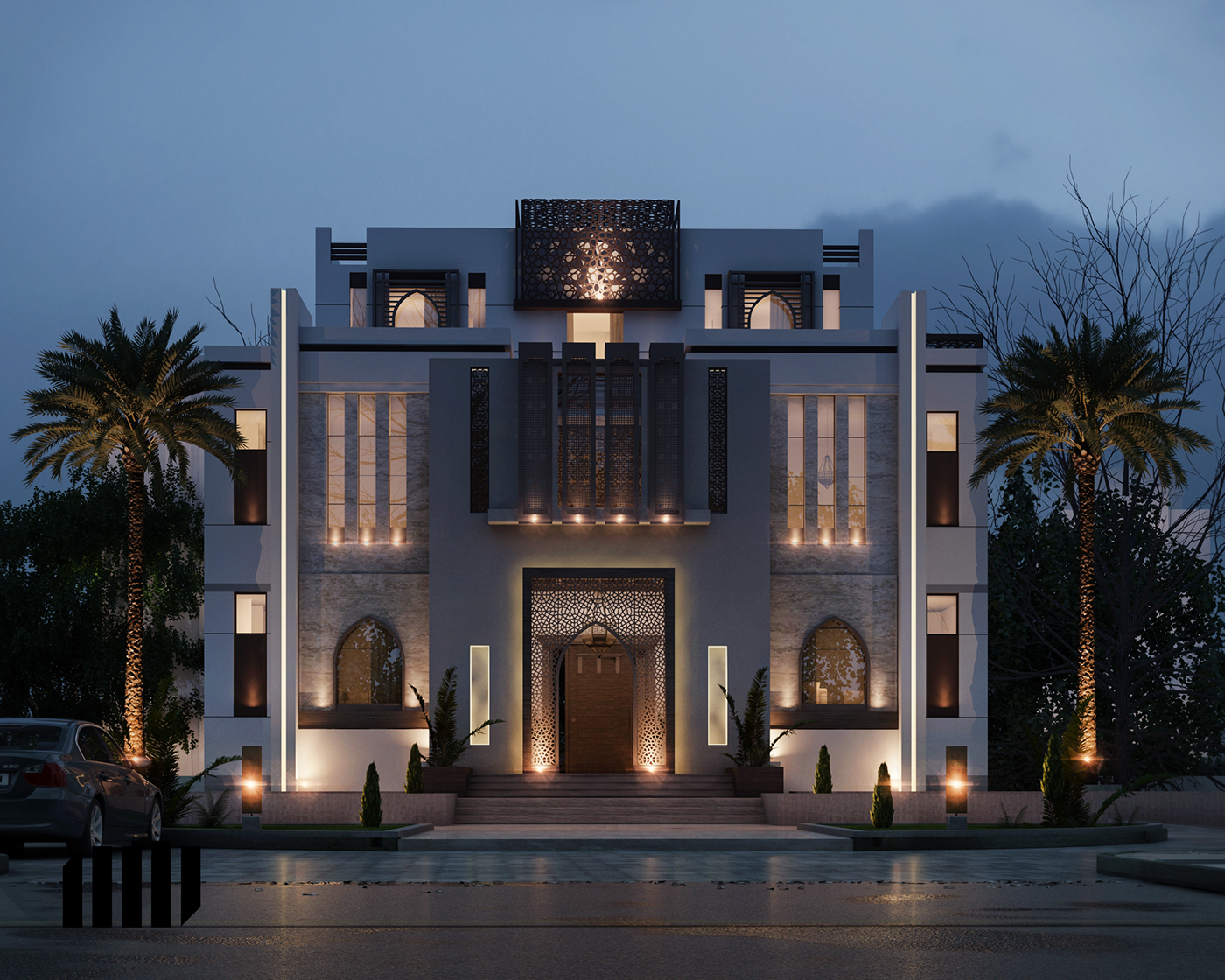Modern Islamic home design blends old traditions with new ideas. It creates homes that feel peaceful, private, and welcoming. These houses follow special rules that respect Islamic beliefs. Families use these spaces to pray, gather, and rest while staying connected to their culture. Homes focus on privacy, natural light, and simple beauty. Large courtyards offer fresh air and safe spaces for families to spend time together. Windows bring in sunlight but keep homes hidden from outside view. Walls stand tall to protect families from noise and strangers. Every part of the house serves a purpose: helping people live comfortably and peacefully.

This article will discuss modern Islamic house design and its features and principles.
What is Modern Islamic Home Design?
Modern Islamic home design blends old traditions with new ideas. It welcomes sunlight, fresh air, and open spaces while respecting Islamic values like privacy and modesty. These homes hold cosy courtyards where families gather and incredible breezes dance. Windows wear beautiful screens (mashrabiya) to shield the inside from the outside eyes. Special rooms wait for guests, keeping family spaces peaceful. Builders turn the house toward the Qibla, making praying in a quiet corner easy.
Walls and doors shine with geometric patterns, graceful calligraphy, and smooth arches. Designers choose natural materials and innovative technology to protect the earth. Modern Islamic homes wrap families in comfort, beauty, and faith, balancing the old and new in a way that feels just right.
Key Principles of Modern Islamic House Design
1. Privacy and Space Arrangement
Privacy shapes the way Islamic homes look and function. Families build high walls to hide their homes from the outside world. Windows sit in places that let in air and light but block people from looking inside.
Inside, homes separate rooms for men and women during gatherings. This way, everyone feels comfortable and respects each other’s space. Gardens and courtyards open up the home while still keeping it private.
2. Courtyards as Quiet Retreats
Courtyards offer peaceful places where families relax, talk, and pray. They invite the wind to cool the home and allow the sun to warm it. These spaces keep homes fresh without using machines for cooling.
A courtyard adds beauty, too. Many families decorate them with plants, small fountains, and colourful tiles. These small touches fill the space with life and joy.
3. Bringing in Natural Light
Sunlight brightens the home without sacrificing privacy. Special screens cover windows, letting in soft light while hiding the inside. Skylights send sunlight deep into rooms, glowing up the space naturally.
This modern islamic house design lowers the need for electric lights during the day. It also makes the home feel calm and open.
4. Keeping It Simple and Useful
Islamic homes follow a simple style. Every room has a purpose, and nothing feels extra. Clean lines and open spaces help people move freely.
Colours stay soft and natural, with shades of brown, beige, and white warming up rooms. Furniture stays low to the ground, offering a cosy and welcoming feel.
5. Facing the Qibla
Every Islamic home respects prayer. Families create special places to pray in peace. These rooms face the qibla, the direction of Mecca. Some homes place a simple rug in a quiet corner, while others build a whole prayer room.
This small detail helps families stay connected to their faith daily.
Architectural Features of Modern Islamic House Design
1. Beautiful Patterns and Calligraphy
Islamic homes showcase stunning designs. Walls, floors, and ceilings carry geometric patterns that twist, turn, and connect in beautiful ways.
Many homes display calligraphy with verses from the Quran. These words remind families of faith, wisdom, and peace.
2. Arches and Domes
Arches frame doorways and windows, making homes look grand. Some ceilings hold small domes, lifting the space and adding a sense of openness.
These classic shapes bring Islamic culture into modern homes.
3. Mashrabiya Screens for Shade and Airflow
Mashrabiya screens carve delicate wooden designs into windows and balconies. These screens block heat and strangers' eyes but let cool air rush in.
This design creates a balance between comfort and beauty.
4. Natural Materials
Islamic homes embrace nature by choosing wood, stone, and clay. Families use wooden doors, marble floors, and handmade tiles to bring warmth and tradition into their spaces.
These materials last a long time and give homes an earthy feel.
Interior Design Elements of Modern Islamic Homes
1. Simple, Cosy Furniture
Furniture stays low to the ground, welcoming people to sit and relax. Soft cushions invite guests to stay longer.
Storage hides inside built-in shelves, keeping rooms tidy and neat.
2. Warm and Natural Colours
Islamic homes stick to colours that feel calm and soothing. Beige, brown, and cream fill most rooms, while soft blues and greens add a cool touch.
Gold and copper appear in small details, bringing elegance without taking over the space.
3. Water and Greenery for Peace
Water features flow in courtyards, cooling the air and soothing the mind. Some homes grow indoor plants to freshen the space.
These details connect homes to nature and make them feel peaceful.
The End Note
Modern Islamic house design creates warm, practical, and spiritually rich homes. These homes balance the old with the new by protecting privacy, welcoming natural light, and honouring traditions. Courtyards invite fresh air, mashrabiya screens filter sunlight, and prayer rooms offer peaceful spaces for worship. Simple furniture, earthy colours, and natural materials keep homes grounded and serene.
Every detail helps families live in harmony with their faith and surroundings. Modern Islamic homes blend culture, comfort, and function, making them perfect for families seeking beauty and peace in their everyday lives..